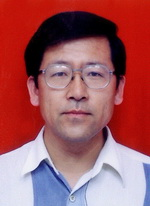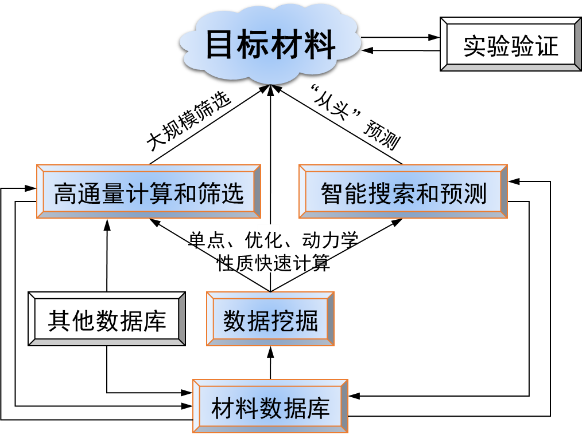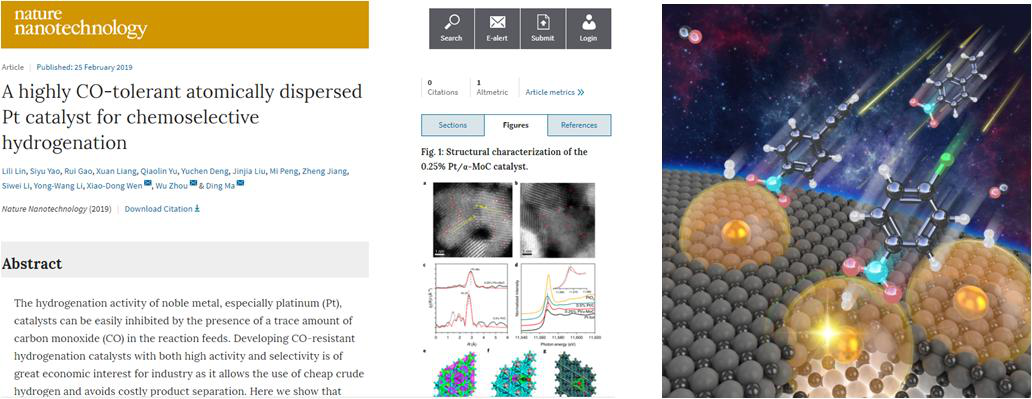High-throughput materials computation and design
High-throughput materials computation and design






Li Ning Professor of Beijing Information Science & Technology University
Duan Wenhui Professor of Tsinghua University, and academician of the Chinese Academy of Sciences
Zou Xiaoping Professor of Beijing Information Science & Technology University
Xu Yabin Professor of Beijing Information Science & Technology University
【Core Members】
Li Ning Professor of Beijing Information Science & Technology University
Duan Wenhui Professor of Tsinghua University, and academician of the Chinese Academy of Sciences
Zou Xiaoping Professor of Beijing Information Science & Technology University
Xu Yabin Professor of Beijing Information Science & Technology University
【Research Background】
After a long time, two major issues remain to be resolved in material research: (1) how to understand the structure, mechanism, and structure-activity relationship of materials and (2) whether rational design can be performed in the case of insufficient understanding. In fact, these two issues are common challenges in the development of new materials. This team will rely on the information characteristics and research advantages of the Materials Genome Engineering High-tech Center at Beijing Information Science & Technology University. These will be used to achieve direct material discovery by developing computational forecasting tools, such as a high-throughput computing and screening platform and intelligent search and prediction software. Data mining software will be used to build accurate and reliable “structure-property” models, to interactively provide basic data and “structure-property” models. These will serve as feedback to the processes of high-throughput computing and screening and intelligent search and prediction. The final goal is the theoretical design and discovery of target materials.
【Research Objectives】
We aim to develop high-throughput multi-scale, concurrent/parallel, automatic process computing methods and dedicated software with proprietary intellectual property rights. We will build a hardware system and an operating environment that supports high-throughput computing to form an open shared, high-throughput platform for the computing and design of materials, and to achieve rapid, low-cost screening and design of new materials, as well as efficient exploration of new material effects.
We aim to construct a high-throughput material computing and design platform integrating a high-throughput computing hardware system and an operating environment supported by home-developed high-throughput material computing software and efficient intelligent databases. This will be done using computing methods and software systems that can support efficient, large-scale computational material simulation and accurate prediction of material properties, and by a processing system that can handle masses of data in high-throughput material computing, so as to achieve the design and prediction of new materials in a rapid and low-cost manner.
【Main research areas】
1. High-throughput multi-scale computational material simulation methods
2. Design of efficient material surface search algorithms, and development of high-throughput computing programs
3. Dedicated computing systems for high-throughput computing
【Important Research Progress】
1. A joint industry-university-research base was established for collaboration between the Beijing Information Science & Technology University and SYNFUELS CHINA under the support of the Beijing Advanced Innovation Center for Materials Genome Engineering. Centered on the discovery of catalytic energy materials in close alignment with “Experiment-Computing-Data,” a high-throughput material design platform was constructed, and a preliminary proprietary discovery platform was established and developed. The platform, which is based on high-throughput computing and screening, allows the development of both intelligent prediction modules and data mining modules, and has been preliminarily applied to novel electride systems and catalytic material systems. In particular, the project “discovery and application of inorganic electrides based on data mining and material prediction” is supported by the key research and development plan of the Beijing Municipal Science and Technology Commission.

Figure 1 Schematic diagram of the material discovery platform mainly supported by artificial intelligence algorithm and data mining
2. By using a high-throughput catalytic material design platform, the team designed a Pt/MoC catalyst system that resists CO poisoning and achieves high-efficiency selective hydrogenation of organic substances in water solvent. The research results were published in Nature Nanotechnology (impact factor of 37.5), providing important guidance for the use of non-pure H2.

Figure 2 Schematic diagram of catalytic hydrogenation without CO poisoning of the catalyst
